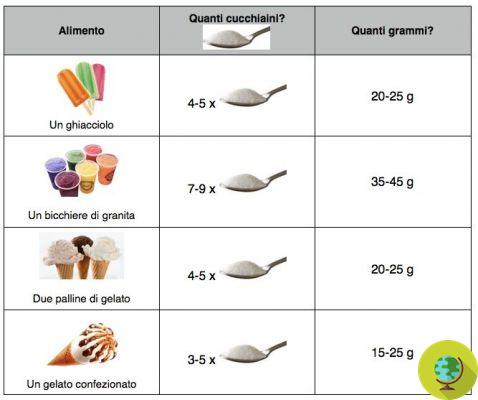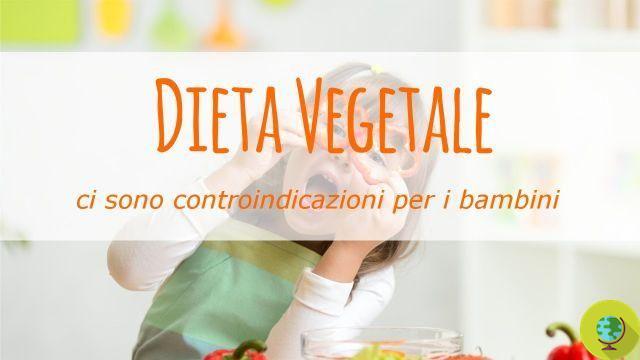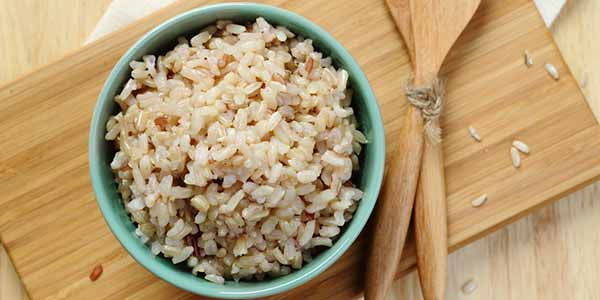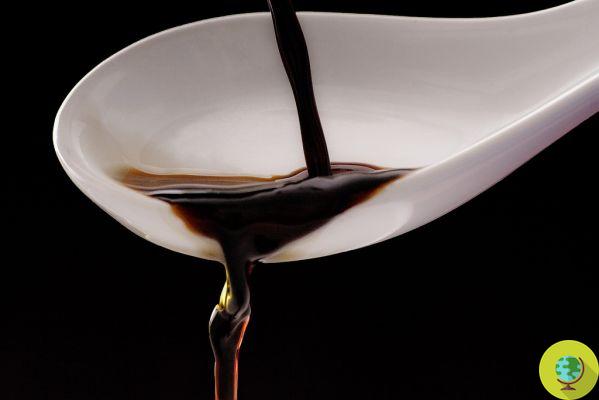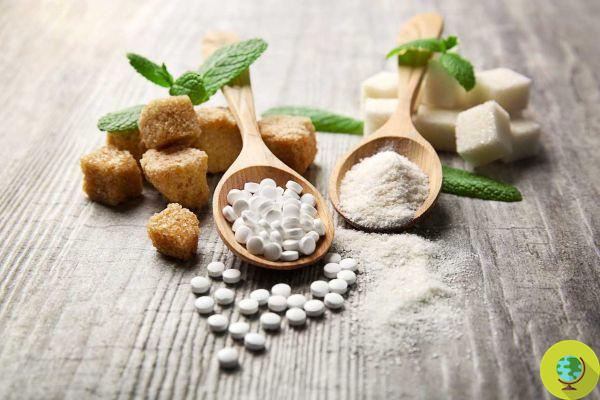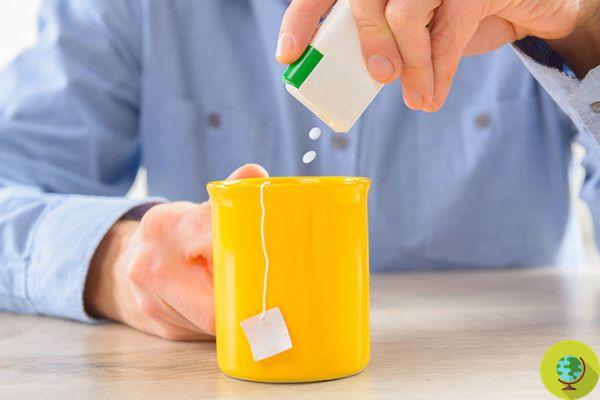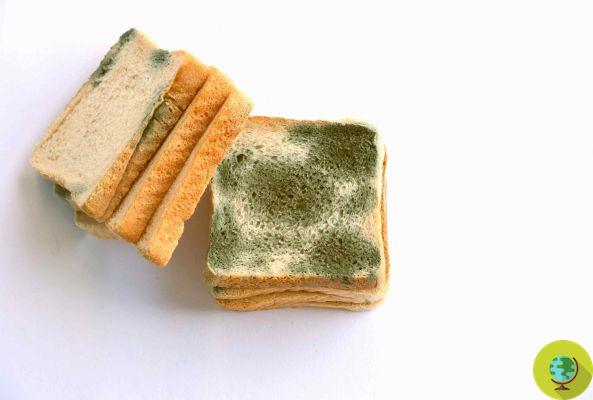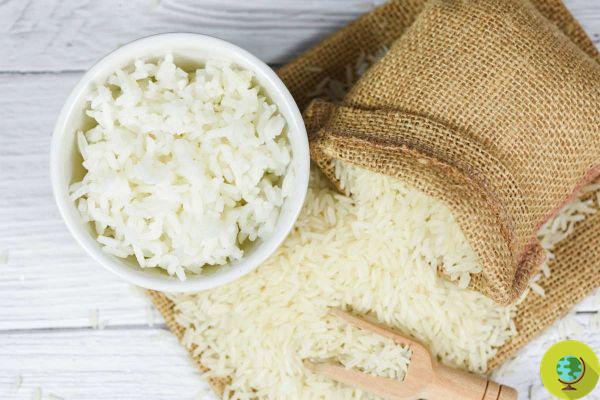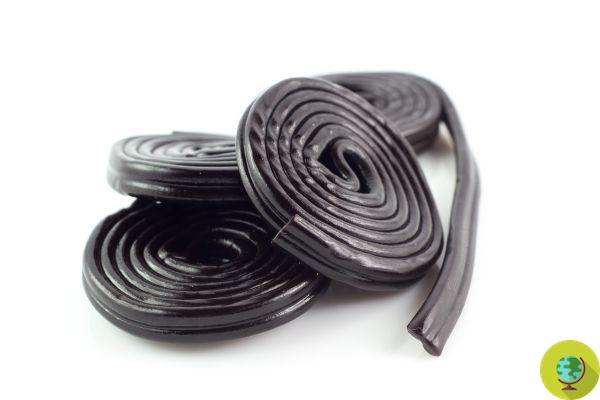A new study from the Department of Public Health and Infectious Diseases of the La Sapienza University of Rome claims that water bottles release metals
Don't store avocado like this: it's dangerousWe are trying to limit the use of plastic bottles as much as possible by replacing them with water bottles, made most of the times in aluminum or steel. Now a new study by La Sapienza in Rome, however, makes it known that these instruments release metals, bisphenol A and phthalates within the limits of the law.
The new research, carried out by the Department of Public Health and Infectious Diseases of the La Sapienza University of Rome and commissioned by the Acqua Foundation, was carried out with the aim of evaluating the possible transfer of metals, semimetals, non-metals, phthalates and Bisphenol A from commercial water bottles used for storing water intended for human consumption during a simulation of conditions of use.
It is the first studio of its kind. Until now, in fact, studies had mainly examined the biological risk associated with the use of water bottles but not the transfer of substances by them.
To be taken as a sample were 20 types of water bottles different present in stores or purchased online. The water bottles to be subjected to the transfer tests were identified through a market survey conducted in September 2019 in Rome in the main stores of household equipment, sports equipment and in major shopping centers as well as on the electronic market.
In this way, products of different capacities (from 350 to 1000 mL) were identified, made of different materials (stainless steel, aluminum also recycled, plastic materials and silicone) and intended for the adult population or children.
After having chosen and purchased the bottles (2 for each type in order to carry out all the analytical tests in duplicate), assessed the release of 40 inorganic elements: metals, semimetals, non-metals and 7 organic compounds (6 phthalates and Bisphenol A).
However, the brands purchased for the study are not reported.
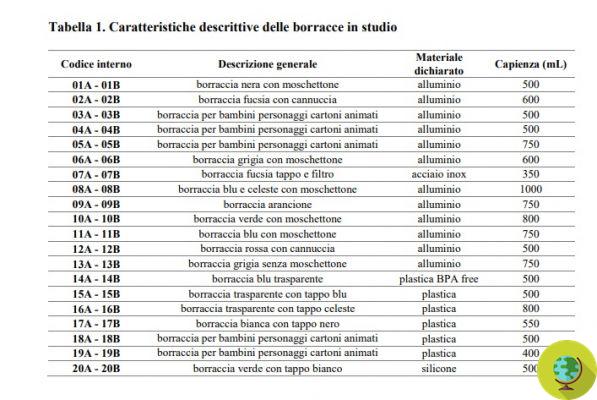
© La Sapienza
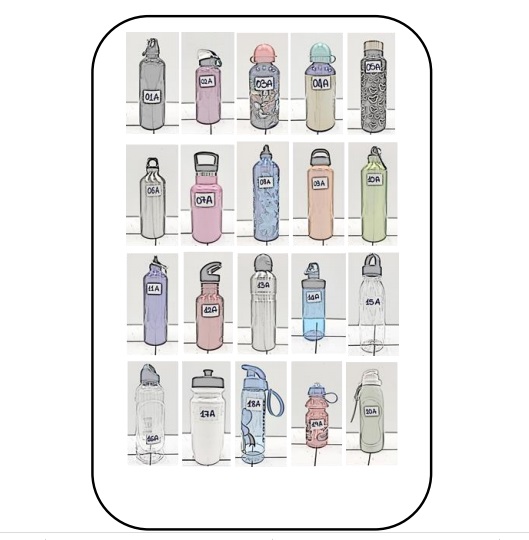
© La Sapienza
Thanks to the over 24 thousand analytical results obtained and the simulation of use that involved the use of demineralized water, the experts were able to evaluate the release of substances in each individual bottle. As we read in the study:
“The valuation of the sales was carried out by simulating real use for a total duration of 28 days; for the simulation, demineralized water by reverse osmosis (test water) was used in order to obtain reproducible results also in other laboratories and to avoid possible interference due to the use of 'tap' water, which differs from area to area and with one level of highly variable mineral content ".
The analysis was carried out by reproducing the most common ways of using water bottles. In particular, both the rinsing and the filling and consumption phases were considered during the first hours after filling, after 5 hours (morning at school), after 8 hours (working day) and therefore for subsequent uses.
Furthermore, before the start of the tests, each of the two bottles of each type was rinsed 5 times with test water, drained and then refilled. This avoided the potential interference of chemical elements and compounds commonly present in drinking water (in variable concentration even between one day and the next) and the differences due to the different levels of chemical elements and compounds present in the drinking water of different geographical areas. .
It was thus seen that the plastic bottles did not release organic compounds but all the water bottles tested yielded inorganic elements, then metals, in a variable way according to the type.
They have often been noticed multi-element supplies aluminum, chromium, lead, nickel, manganese, copper, cobalt, etc. but, the scholars specify, always within the limits of the law. The problem, however, exists the same as these metals could also be present in the water we drink or in some foods and therefore they would add up, exceeding the levels considered safe for health.
The following tables show the summary data for each element sought, obtained on a total of 20 types of water bottles.
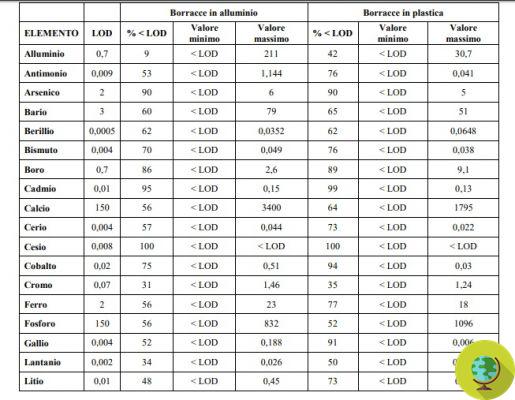
© La Sapienza
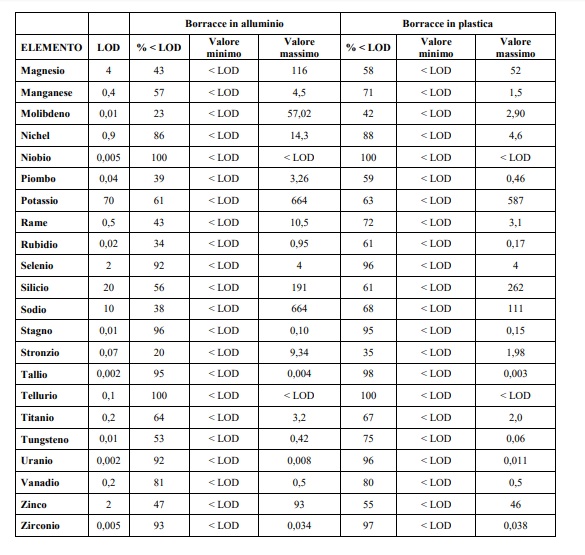
© La Sapienza
The LOD, limit of determination, represents the value below which it is not possible to express a numerical result. For the Aluminum parameter for 91% of the analyzes overall gave measurable levels of this element for metal water bottles.
In the following tables you can see the average levels of some inorganic elements tested for each type of bottle in relation to the LOD, represented by the red line.
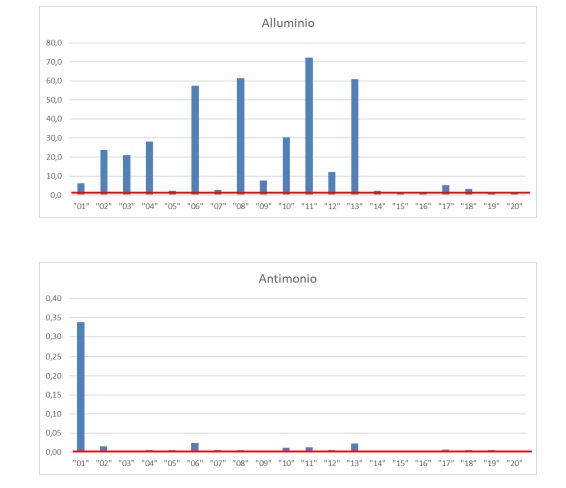
© La Sapienza

© La Sapienza

© La Sapienza


© La Sapienza
As the researchers write:
“In summary, Aluminum is sold by all metal water bottles; Antimony, Barium, Boron, Cadmium, Cobalt, Gallium, Molybdenum, Nickel, Rubidium, Tin, Strontium are sold only by some types of water bottles; Beryllium, Bismuth, Calcium, Cerium, Chromium, Iron, Phosphorus, Lanthanum, Lithium, Magnesium, Manganese, Potassium, Copper, Silicon, Sodium, Lead, Titanium, Vanadium and Zinc are sold by almost all types of water bottles; Cesium, Niobium, Tellurium, Zirconium are not sold by any type of water bottle ".
As you can see by comparing the tables and numbers relating to the different bottles, the only steel bottle taken as a sample results to release more nickel and cobalt so maybe it is not recommended especially for those allergic to these two substances. It can be a good solution, however, for those who want to avoid aluminum since it releases almost nothing.
What does the transfer of these substances from the water bottles depend on? As they made known by the Department of Public Health and Infectious Diseases of the La Sapienza University of Rome:
“The variability found in the transfer of chemical elements is most likely to be attributed to both the quality of the manufacturing material and the processing methods. The presence of foreign metals such as Chromium, Bismuth, Manganese, Barium, Copper, Zinc, etc. in the sale of aluminum water bottles they suggest that the manufacturing material may also derive from recovery / recycling processes, critical elements if carried out without the due attention necessary to ensure compliance with the provisions of current legislation on materials intended for contact with food ( so-called MOCA) ".
The following table shows the results obtained for the organic compounds sought.
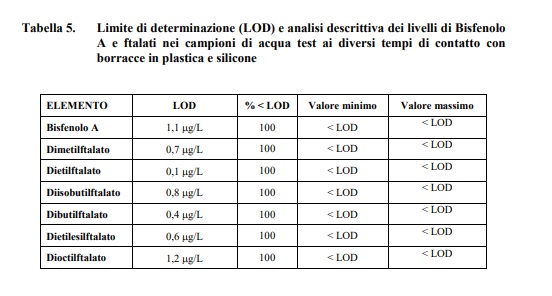
© La Sapienza
As already mentioned, the plastic and silicone bottles showed no release of phthalates and bisphenol A.
The study then brings up another problem, the fact that some bottles analyzed are not fully compliant with EC Regulations and national standards on MOCA (Materials and Objects in Contact with Food). In fact, water is considered a food in all respects, and therefore the tools for its conservation must respect certain characteristics so as not to make it lose its organoleptic characteristics, while at the same time maintaining maximum hygiene and health safety.
Some bottles taken as a sample did not have the required symbol, indications for use and other elements that, by law, must instead be present in order to place them on the market.
We have already talked about the possible danger of aluminum water bottles (and other objects made with this material) and it does not surprise us too much, different speech for those in steel. We await new studies that confirm, perhaps with a larger sample of water bottles of this material, the release of metals and other substances.
And to think that La Sapienza itself has banned plastic by distributing water bottles made of metal to students.
La Sapienza prohibits plastic: distribute metal water bottles to students
Sources of reference: Study of the Department of Public Health and Infectious Diseases La Sapienza / Adnkronos
Read also:






